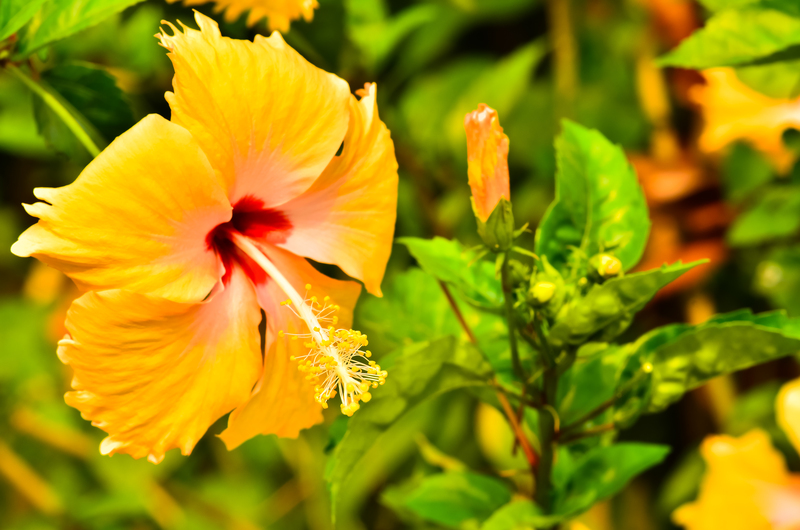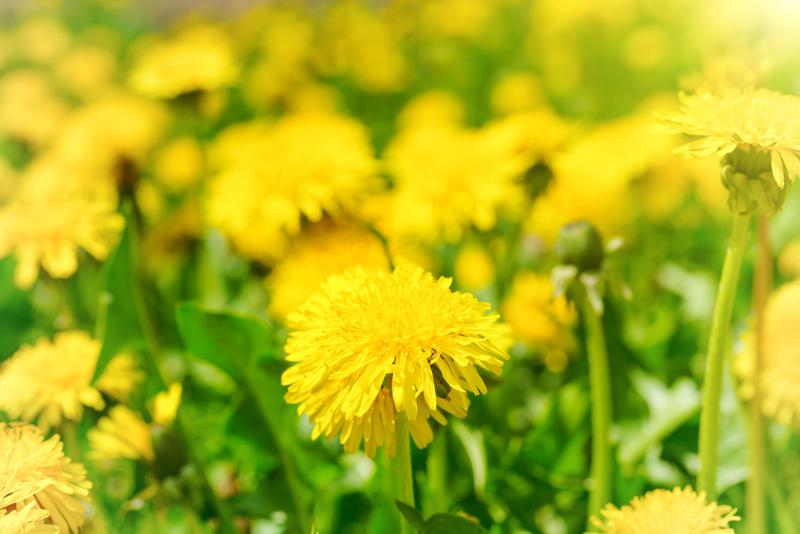From Novice to Expert: Orchid Care Made Easy
Posted on 16/09/2025
From Novice to Expert: Orchid Care Made Easy
Orchids often evoke images of exotic jungles and sophisticated flower shows. However, orchid care doesn't need to be the closely guarded secret of expert gardeners. In fact, with the right information and a gentle, patient approach, anyone can transform from a novice into a confident orchid caretaker. Whether you're just starting your journey or looking to upgrade your skills, this comprehensive guide will show you how orchid care is made easy, step by step.

Understanding Orchids: A Brief Introduction
Orchids, members of the Orchidaceae family, comprise over 25,000 species and more than 100,000 hybrids. Their diversity is staggering, from the delicate Phalaenopsis (also known as the Moth Orchid) to the showy Cattleya and quirky Dendrobium species. Recognizing your orchid's unique traits is the cornerstone of successful orchid plant care.
- Phalaenopsis (Moth Orchids): Beginner-friendly, widely available, and tolerant of indoor conditions.
- Cattleya: Known for their large, fragrant blooms and need for bright light.
- Dendrobium: Available in many sizes and colors, often requiring distinct seasonal care.
It's essential to identify your orchid variety before you go further. This determination will inform your entire care routine--from light requirements to watering and repotting!
Choosing Your First Orchid: Tips for Beginners
For those just starting out, selecting the right beginner's orchid makes all the difference. Phalaenopsis orchids are highly recommended for their forgiving nature and year-round blooms. Look for a plant that:
- Has firm, green leaves
- Displays plump, healthy roots, ideally with a subtle silvery sheen
- Shows no signs of insects or fungal infections
A healthy orchid is the foundation of easy orchid care. Don't be afraid to ask your local nursery about the best choices for beginners.
Perfect Placement: Light and Temperature Needs
The Role of Light in Orchid Care
Most orchids flourish in bright, indirect sunlight. Excessive sunlight can scorch their leaves, while too little results in limp, weak plants and rare blooms. An east-facing window is ideal, but a shaded south or west window can also work. If natural light is insufficient, consider using a full-spectrum grow light.
- Signs of too much light: Yellow leaves, brown spots, sunburn.
- Signs of not enough light: Dark green leaves, few/no blooms.
Temperature Guidelines for Orchids
Most commonly grown orchids prefer daytime temperatures between 65-80?F (18-27?C) and nighttime temps of 55-65?F (13-18?C). Drastic fluctuations can stress the plant, while gentle changes between daytime and nighttime temperatures encourage orchid flowering.
Watering Orchids: Avoiding the Most Common Mistakes
The primary cause of death among beginner orchids is overwatering. Unlike typical houseplants, orchids have unique roots adapted for quick draining and maximum airflow. Here's how to water your orchid with confidence:
- Check before Watering: Stick your finger into the potting medium about an inch deep. Only water if it feels dry or nearly dry.
- Water Deeply, but Infrequently: Soak the plant until water drains from the bottom. Avoid letting the pot sit in water.
- Morning Watering: Always water in the morning to ensure foliage dries by night, reducing risks of fungal growth.
- Type of Water: Rainwater or distilled water is ideal. If using tap water, let it stand overnight to dissipate chemicals.
Remember: It's easier for an orchid to recover from too little water than from root rot caused by excess moisture.
Orchid Potting Mix and Repotting Basics
Orchids do not grow in regular soil. Instead, they thrive in a special orchid potting mix, usually composed of bark, sphagnum moss, charcoal, and perlite. The goal is to mimic their natural environment, which is attached to trees or rocks with minimal organic matter.
Best Practices for Repotting Orchids
- Frequency: Repot every 1-2 years, or when the potting mix breaks down.
- Signs it's time to repot: Roots growing out of the pot, soggy or broken-down medium, sluggish growth.
- Steps:
- Gently remove the orchid from its pot and trim any dead roots.
- Shake off old medium and add fresh orchid bark mix.
- Secure the orchid in a slightly larger container, ensuring good airflow to roots.
Tip: A transparent plastic pot makes it easier to monitor root health and moisture levels.
Fertilizing Orchids: Feeding for Vibrant Growth
Orchids are light feeders but need nutrients to flourish. Use a balanced, water-soluble fertilizer (20-20-20 or similar) at quarter to half strength, once a month during the active growing season.
- Flush the potting mix with plain water monthly to remove salt buildup.
- Reduce or halt feeding during the winter rest period (if your orchid variety requires it).
Over-fertilizing is a common error. Err on the side of too little rather than too much, as excess fertilizer can burn delicate roots.
Humidity and Orchid Care: Creating the Perfect Environment
Orchids thrive in humidity levels of 40-60%. Dry air can cause buds to drop or flowers to fade prematurely. If your home is dry, try these humidity-boosting techniques:
- Use a humidity tray: Place pebbles in a shallow dish, fill partially with water, and set the orchid pot above the waterline.
- Mist the leaves gently in the morning (not the flowers).
- Group orchids together to create a mini-microclimate.
- Consider a room humidifier, especially in winter.
Warning: Good air circulation is just as important as humidity. Stagnant air encourages disease, so a small fan used gently in the room is helpful.
Expert Tips for Blooming Success
How to Encourage Re-Blooming
One of the most rewarding aspects of orchid care at home is coaxing your plant to rebloom. Many orchids, especially Phalaenopsis, can bloom multiple times a year if you:
- Trim the flower spike just above a node after the blooms finish.
- Maintain consistent lighting, temperature, and humidity.
- Introduce a slight nighttime temperature drop (about 10?F) in the fall to trigger spikes.
Dealing with Pests and Diseases
Healthy orchids are generally resistant to pests, but problems can arise. Look out for:
- Mealybugs: Appear as white, cottony masses on leaves and stems.
- Scale insects: Small brown bumps on leaves.
- Spider mites: Fine webbing and stippled leaves, especially in dry conditions.
- Fungal infections: Yellow, black, or mushy leaf spots.
Treat by wiping affected areas with soapy water, using neem oil, or isolating the plant if necessary. Remove infected leaves or flowers promptly. Keeping humidity balanced and ensuring proper air movement are your best preventive tools.
Advanced Orchid Care Techniques
- Orchid propagation: Some species allow easy division or keiki (baby plant) growth for propagation.
- Special lighting: Experienced orchid growers use grow lights for year-round blooming.
- Water culture: A soil-free method suitable for some varieties, involving suspended roots in water.
While these steps may appear advanced, with time and practice, you'll find that expert orchid plant care is within reach.
Common Orchid Care Myths Debunked
- Myth: Orchids are too difficult for beginners.
Fact: With the right species and care technique, anyone can enjoy orchids. - Myth: Ice cubes are a good way to water orchids.
Fact: Cold water can shock orchid roots. Room temperature water is always better. - Myth: Orchids require daily attention.
Fact: In fact, orchids often thrive on neglect. Simple weekly care is usually sufficient.
Your Orchid Care Calendar: Month-by-Month
- Spring: Resume feeding and watch for new growth. Repot if needed.
- Summer: Increase watering and humidity. Provide some shade from intense sun.
- Autumn: Reduce feeding and watering if growth slows. Trigger spikes with cool nights.
- Winter: Maintain temperature and humidity. Some orchids rest, needing less water and no food.
Remember: Each orchid species has unique cues; get familiar with your plant's natural rhythm for the best results in your orchid houseplant care routine.
Frequently Asked Questions (FAQs) About Orchid Care
Why won't my orchid bloom?
Lack of light is the most common cause. Ensure your orchid receives sufficient bright, indirect light. Also, some species require a temperature drop at night to trigger flowering.
How do I know if I'm overwatering?
Check for yellowing, limp leaves and brown, mushy roots. Healthy roots are firm and green/silver. Always let the potting medium dry before rewatering.
Do I need to trim my orchid's aerial roots?
No. Aerial roots absorb moisture and nutrients from the air. Only trim dead or shriveled roots--healthy aerial roots are a sign of a thriving plant.
When should I repot my orchid?
Every 1-2 years, after flowering or when the potting medium deteriorates. Repot if you notice cramped roots or stagnant growth.

Conclusion: Unlocking the Joy of Orchid Care
Whether you're a beginner dreaming of your first bloom or a budding enthusiast striving for show-stopping displays, remember: orchid care made easy is all about observing your plant, responding to its needs, and embracing a little patience. Orchids reward attentive, gentle care with breathtaking flowers and eye-catching foliage.
- Start with a beginner-friendly species like Phalaenopsis
- Master the basics--light, water, humidity, and feeding
- Graduate to advanced techniques as your confidence grows
Each stage of your orchid care journey brings new discoveries and rewards. With the comprehensive tips above, you'll find that transitioning from novice to expert is not only possible, but also enjoyable. Dive in, explore, and soon you'll have a thriving collection that turns any home into a living paradise.
Additional Resources for Orchid Enthusiasts
- The American Orchid Society: www.aos.org
- Royal Horticultural Society: www.rhs.org.uk
- Local orchid clubs and online forums for real-time advice
Remember: Every expert was once a beginner. Start your orchid adventure today, and experience the wonders these incredible plants can bring into your life!

